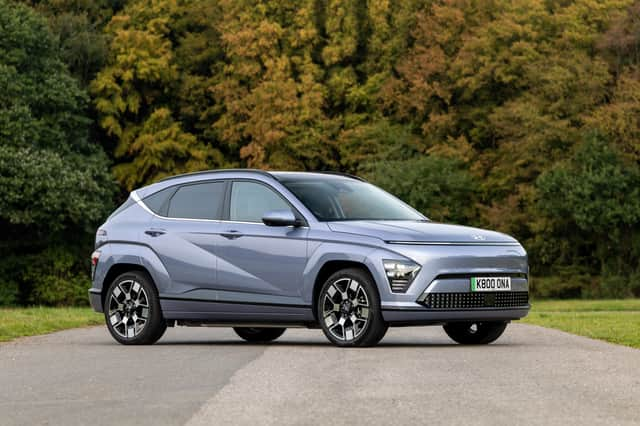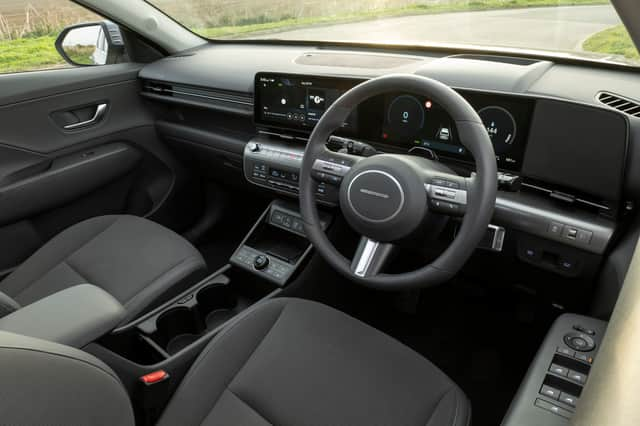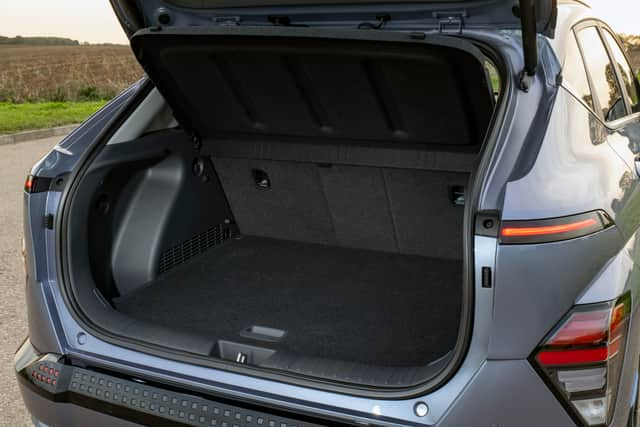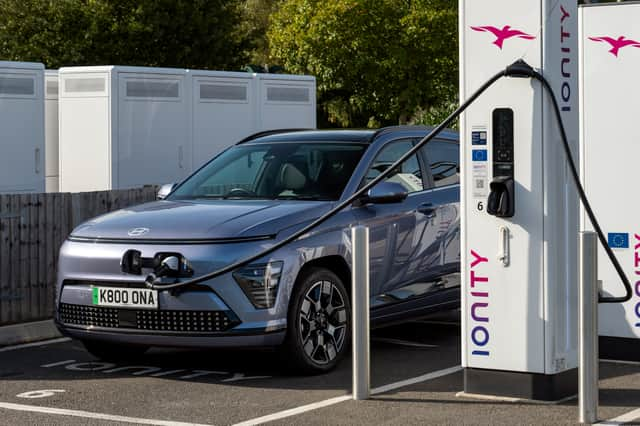Hyundai Kona Electric review: spacious and practical EV with strong range figures for price


Hyundai the brand has been on a journey. When I first started driving, the Hyundai badge was synonymous with cheap and cheerful models like the three-box hatchback Accent and the Getz city car. Somewhere along the way Hyundai has grown up and now the South Korean manufacturer produces some of the best looking mainstream cars available.
The Ioniq 5 is a brilliant looking thing, the Ioniq 6 is perhaps a touch more Marmite, but still a bold and exciting manifestation of what an electric car can look like. It’s best not to get me started on the Hyundai N Vision 74 concept car, the stunning two-seater sports coupe that’s part Delorian, part Mazda RX-7 via Dominic Torretto’s custom workshop, but, it’s safe to say, I like it.
Advertisement
Hide AdAdvertisement
Hide AdSo I was a tad disappointed with the exterior of the all-new Hyundai Kona Electric which, despite sharing a mutual design language with the Ioniq 5, feels like some of the drama has been lost in translation.
It might look slightly more vanilla than other, more exciting releases from the Hyundai range but, perhaps a more mainstream appearance will be a strength in the competitive, small SUV segment. Under the surface it's surprisingly spacious, well equipped, has both long-range and medium range versions and returns decent real-world performance.
Interior and practicality
The new Kona feels more capacious than the outgoing model, the bright and airy interior shares a minimalist layout with the aforementioned Ioniq 5, as well as the grey and brushed aluminium colour palette.


The dashboard is dominated by the wide digital display, with the infotainment screen and the digital instrument cluster integrated in one broad panel featuring a large speaker - from which blasts various beeps and bongs designed to keep your driving examination-appropriate.
Head and leg room are impressive both front and rear and four tall adults can comfortably be transported without the back passengers needing to hunch. Our Ultimate edition test car also included the Lux Pack, which adds premium front seats to an already comfortable package.


There’s good cabin storage with two front cupholders, decent-sized door pockets, hidden storage in the centre armrest plus charging pads and USB ports galore.
The 466-litre boot is competitive with cars a class above in terms of size and 40/20/40 split-folding rear seats add flexibility and expand luggage capacity to 1,300 litres when dropped down.
The driving position is excellent and narrow pillars mean the view at junctions is largely unrestricted. Reversing camera and parking sensors are standard across the range, so despite a less expansive view to the rear there are no concerns around reverse parking beyond competency of the driver.
Advertisement
Hide AdAdvertisement
Hide AdThe infotainment system is easy to use for most day to day tasks, however audible warnings from the computer-controlled driver assistance and safety package were overly shouty and, despite coaching in advance from the Hyundai logistics team, I struggled to reduce the volume and sensitivity of the system.
Driving and performance
Our test car was propelled by the more powerful 215bhp electric motor paired with the 65.4kWh battery. There’s also a lower-cost, lower range option available with a 48.4kWh battery and 154bhp motor.
Official range of the larger capacity version is 319 miles, which is more than competitive for a sub-£40,000 family EV. Nought to 62mph comes in 7.8 seconds and it does feel quite quick off the mark from a standing start, but this car is at its best - both in terms of range optimisation but also overall driving experience - when driven smoothly at relatively modest speeds.
Facts and figures
Price: £43,095.00 (£45,180, as driven)
Battery:65kWh Lithium-ion Polymer
Power: 215bhp/ 160.3 KW
Torque:188.1 ft lbs
Transmission: Permanent Magnet Synchronous Motor
Range: 319 miles
The suspension is soft, the ride comfortable and the steering light. In the city it soaks up bumps and potholes with little fuss and, despite the benefit of a modern SUV’s raised ride height and driving position, it never feels anything less than nimble.
At speed, a few slight niggles start to creep in with the experience - the light steering doesn’t stiffen up enough above 50mph for my liking and it has a tendency to lean in the corners thanks to the soft springs.
Most will ignore them in built-up areas, but it is good to see Hyundai equipping the car with manual controls for the regenerative braking, which come into their own on long stretches of dual carriageway. The default setting is quite active, slowing you down noticeably, and being able to control via the paddles either side of the steering wheel allows the driver to optimise for the best cruising experience or maximise the feedback of kinetic energy into the battery system as desired.


The Kona EV is rated for charging at up to 102kW so, if you can find an available fast charge station, you can get an eighty per cent charge in around 40 minutes. At a more typical 7kW at-home charger you’ll manage a full charge from empty in around ten hours.
Verdict: should you buy a Hyundai Kona Electric?
The Kona Electric is a decent crack at an EV that’s practical enough for most families in terms of space and range and the redesigned model is far more contemporary-looking that the outgoing car, even if it lacks some of the drama of its counterparts in the Ioniq range.
Advertisement
Hide AdAdvertisement
Hide AdTop spec Ultimate and N Line S models add a few desirable extras to an already well-equipped range, but push the price beyond £43k which starts to look quite pricey in comparison to the Kona’s direct competition like the Kia Niro EV or the MG 4.
At a mid-30s price point, there’s some real space between the Kona and other similarly priced EVs in terms of range and refinement. Best value looks like the entry-level Advance trim, paired with the long-range 65kWh battery, which comes in a shade under £35k on the road.
Comments
Want to join the conversation? Please or to comment on this article.
